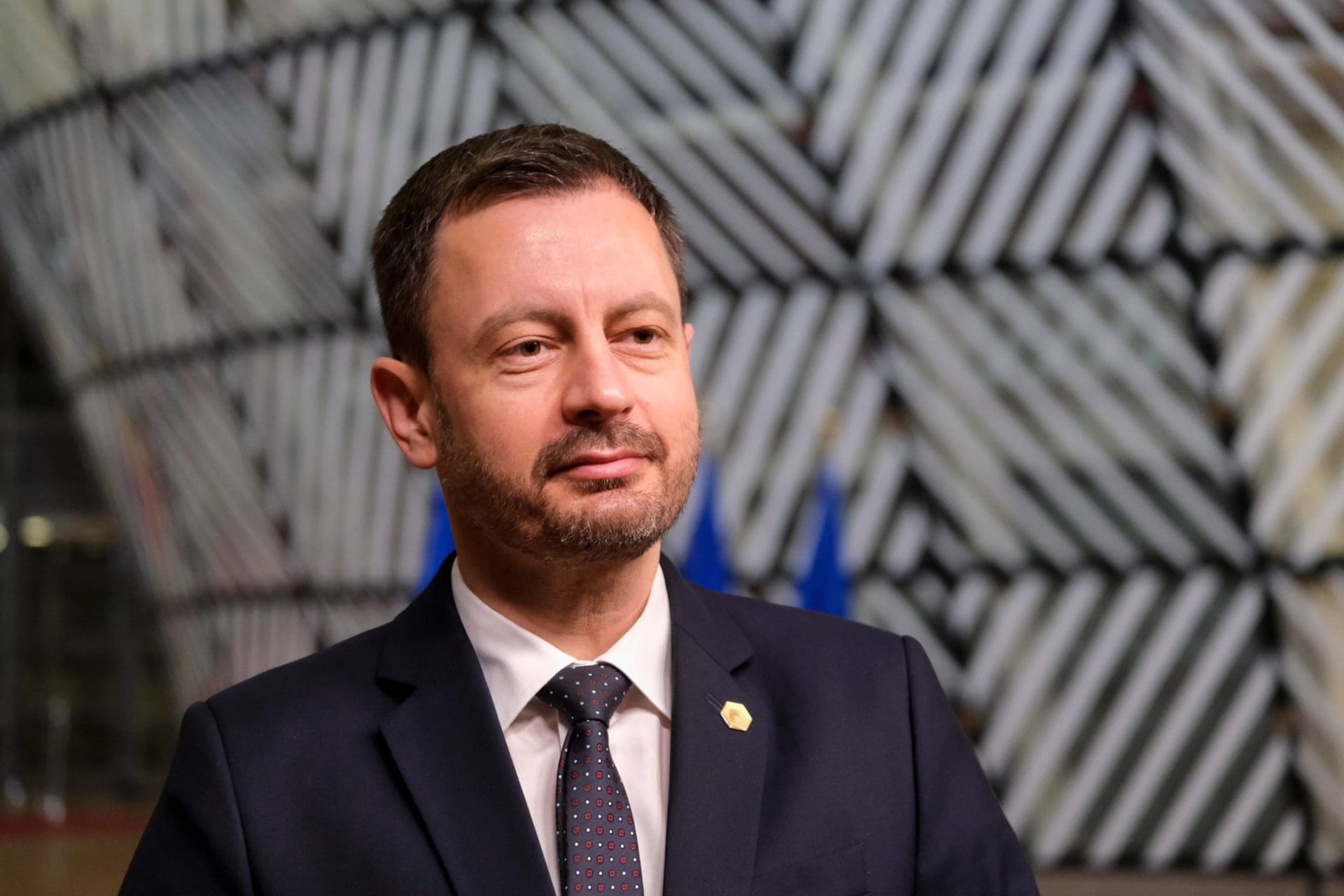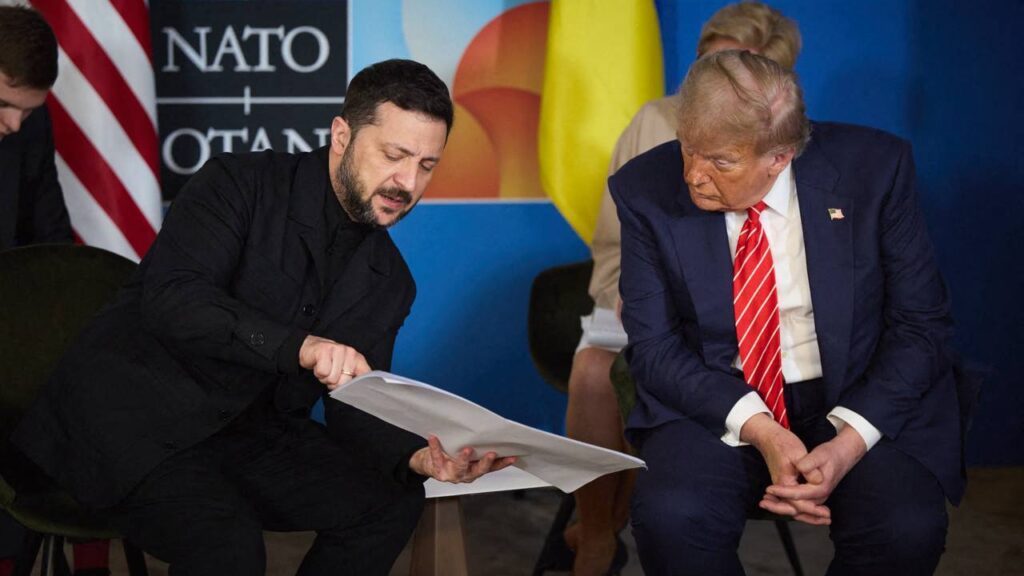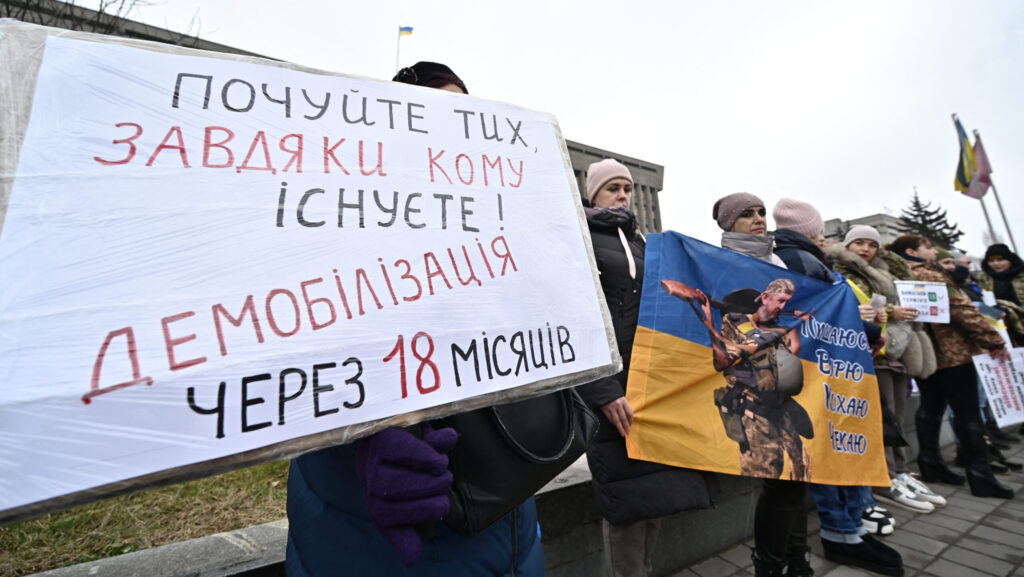Ukraine has been demanding arms transfers from the West for years, but most loudly and desperately since the outbreak of the war. In reaction to the bloodshed, a public political debate has started in Slovakia over how the country could effectively support its Eastern neighbour. As these discussions and disputes occur not just in drawing rooms but also live on television screens, it is not easy to decide whether the newly formed political elite, including the President, the Prime Minister and the four-party coalition leaders, have properly assessed the seriousness and gravity of the current situation. What is certain is that there is no shortage of creative ideas on how to support Ukraine. What is surprising, however, is how forcibly and spectacularly the Slovak Republic, which was extremely close to the Russian Federation in the nineties, is trying to oppose this great nuclear power.
Slovakia’s list of possible steps to support Ukraine is getting longer and longer. While only donation of humanitarian aid was initially on the table, the provision of arms shipments has since supplemented it.[1] This can be considered a significant shift, but presumably not a final one. The additional new ideas that have been suggested could result in Slovakia being plunged into the war. Currently, two concepts occupy public discourse, one more dangerous than the other. There have been ongoing talks not simply about yielding the Slovak MIG-29 fighter fleet to Ukraine, but, according to governmental sources, the country is seriously considering handing over its S-300 air defence infrastructure, too. Similarly to the MIG jets, this missile system was also developed in the Soviet Union and is currently used, among others, by Ukraine. This means that the Armed Forces of Ukraine already have the expertise to operate the system. It is rather obvious that the realisation of these ideas may trigger unpredictable repercussions from Moscow.
There have been ongoing talks not simply about yielding the Slovak MIG-29 fighter fleet to Ukraine, but the country is seriously considering handing over its S-300 air defence infrastructure, too
The idea of providing military aircraft to Ukraine has not been unique to Slovakia, as both Poland and Bulgaria are pondering the possibility of the handover of their Fulcrums. According to publicly available information, Poland currently uses 23[2], Bulgaria 14[3] and Slovakia 11[4] such fighter jets. However, NATO leadership has not yet contributed to this move for several reasons. The first one is logistics. Who and in what way would deliver the planes? All possible solutions are risky. If NATO decided to transport the aircraft by land, the process would consist of at least three phases. The dismantling of the jets should happen somewhere close to the border, where necessary infrastructure is given, presumably in Poland. This should be followed by the transfer of the parts to Ukraine. The third phase is the reassembly and commissioning of the planes, which also requires proper infrastructure. Only after the completion of these phases can they be put in working order. This complex logistics operation would require careful planning and professional expertise, even in peacetime. In wartime, however, this operation would not only be complicated and technically demanding, but extremely dangerous as well. The shipments would constitute a constant and primary target for destruction by the Russian Armed Forces, at least from the first moment they cross the Ukrainian state border. This is a considerable risk for both the sending and the receiving party. The ideal solution for the logistical difficulties would be more straightforward: assemble a team of Ukrainian pilots who can operate the planes and fly them into their new location. This seems to be a rough but possibly a viable path. If Ukraine fails to mobilise a sufficient number of pilots, there is still the chance to make the transfer by military personnel from the countries offering the aircraft. In this case, however, NATO member states would immediately get involved in the conflict directly, both due to the physical assets and the human power provided. It must not be forgotten that the Russian military has established air dominance over Ukraine, making it almost impossible to deliver the MIGs in the air without the intervention of ground-based air defence systems or even getting into a dogfight with the Russian Air Force. These scenarios essentially carry the possibility of an escalation of the war. Finally, the fact that Slovakia —just like Bulgaria—would be left without operational fighter jets in case of handing over the MIGs to Ukraine would certainly not be negligible from the aspect of national security. Because of these difficulties, the issue has been removed from the agenda in both countries. Whether temporarily or permanently, it is difficult to judge at present.
The government, however, seems seriously willing to make the transfer, provided that Slovakia is offered adequate compensation from its allies
On the other hand, the idea of handing over the Soviet-made Slovak S-300 air defence system to Ukraine is still on the agenda. Its realisation, however, may lead to an unprecedented estrangement in the relations between Bratislava and Moscow. The S-300 is not the most state-of-the-art anti-aircraft defence architecture, but is still a potent and effective, fully automated system. In Slovakia, the system is deployed near the nuclear power plants and other critical infrastructure to provide air protection to these facilities. Since no other missile system is installed in the country, the transfer of the S-300 would virtually eliminate Slovakia’s air defence capabilities. Not surprisingly, the issue got immediately into the crossfire of fierce domestic political debates, as the opposition strongly objects to the handing over of either the planes or the missile system. The government, however, seems seriously willing to make the transfer, provided that Slovakia is offered adequate compensation from its allies. According to Minister of Defence Jaroslav Naď, if the country gets an alternative air defence solution and the government decides on the move, Slovakia will be eager to help Ukraine by handing over its equipment.[5] The transfer would effectively propel this small Central European NATO member state get into the forefront of international assistance to Ukraine. The question is topical given that Germany and the Netherlands have already brought part of their air defence infrastructure, the Patriot missile system, to Slovakia.[6] Its installation is currently ongoing. The commissioning of this architecture could temporarily reduce Slovakia’s air vulnerability, even if the handover of the S-300 occurs.
The Russian Federation, which had good relations with Slovakia until the outbreak of the conflict in Ukraine, would certainly not accept such a Slovak move. Russian Foreign Minister Sergei Lavrov has already warned against the transfer of S-300 air defence systems to Ukraine. He stressed that Moscow would destroy the cargo as soon as it entered Ukraine.[7] Russia might, theoretically, also have a legal right to forbid the handover. Arms sale contracts, especially when their subject relates to sophisticated systems, usually contain a clause that prohibits the forwarding of the product to a third party. If this is the case in Slovak-Russian relation, then the yielding of the S-300 might require the consent of the Russian Federation. Such approval will not happen. At the same time, it is unlikely that Moscow could prevent the handover by legal enforcement or litigation.
In a somewhat unusual gesture in diplomacy, Naď has publicly stated that he was not interested in Moscow’s views on the issue. He referred to the UN Charter, according to which Ukraine can request military assistance, and Slovakia, as a sovereign country, can fulfil this request. Whether this is the reality is questionable. What is certain is that there is a war in Ukraine, and wise leaders should be working towards preventing its escalation.
[1] Webnoviny, ‘Slovensko poskytne Ukrajine ďalší vojenský materiál za viac než štyri milióny eur, druhú dodávku posiela aj Česko,’ (27 February 2022), webnoviny.sk, https://www.webnoviny.sk/slovensko-poskytne-ukrajine-vojensky-material-za-viac-nez-styri-miliony-eur-dalsi-material-daruje-aj-cesko/, accessed 25 March 2022.
[2] John A. Tirpak, ‘Poland Offers MiG-29s in Exchange for Used US Fighters, but Pentagon Shoots Down the Idea,’ (8 March 2023), Airforcemag.com, https://www.airforcemag.com/polands-new-offer-mig-29s-in-exchange-for-buying-used-u-s-aircraft/, accessed 25 March 2022.
[3] Nikolov Krassen, ‘Bulgaria will not send fighters, troops to Ukraine,’ (1 March 2022), Euractiv.com, https://www.euractiv.com/section/politics/short_news/bulgaria-will-not-send-fighters-troops-to-ukraine/, accessed 25 March 2022.
[4] Michal Katuška, ‘Slovensko sa MiGov v prospech Ukrajiny nevzdá, ale zbaví sa ich predčasne,’ (28 February 2022), domov.sme.sk, https://domov.sme.sk/c/22850575/ukrajina-vojna-slovensko-vojenska-pomoc-stihacky.html, accessed 25 March 2022.
[5] Štandard, ‘Slovensko chce poskytnúť systém S-300 Ukrajine: Je mi jedno, aké odkazy posielajú z Moskvy, tvrdí Nad,’ (18 March 2022), dennikstandard.sk, https://dennikstandard.sk/183030/slovensko-chce-poskytnut-system-s-300-ukrajine-je-mi-jedno-ake-odkazy-posielaju-z-moskvy-tvrdi-nad/, accessed 25 March 2022.
[6] Pravda, ‘Patriot prichádza na Slovensko,’ (20 March 2022), spravy.pravda.com, https://spravy.pravda.sk/domace/clanok/620705-patriot-prichadza-na-slovensko/, accessed 25 March 2022.
[7] Georgi Gotev, ‘Russia says will attack Slovakia’s S-300 missile supplies to Ukraine,’ (18 March 2022), Euractiv.com,https://www.euractiv.com/section/global-europe/news/russia-says-will-attack-slovakias-s-300-missile-supplies-to-ukraine/, accessed 25 March 2022.








